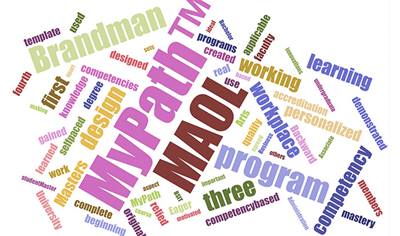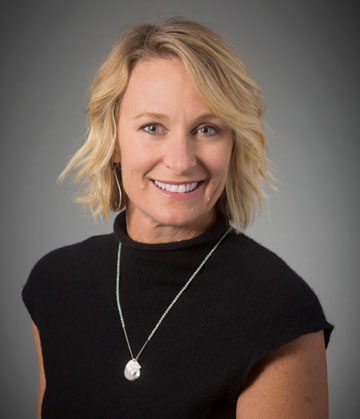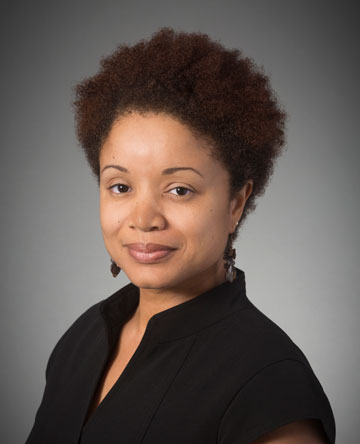January 04, 2019 by Brandman Career Services
 The bell has rung on a new year – a time for reassessing the way things have always been done and trying something new.
The bell has rung on a new year – a time for reassessing the way things have always been done and trying something new.
At Brandman University, nobody waits for the turn of the calendar year to try a new approach. Take, for instance, how the university teaches organizational leadership, an academic topic that has been around for nearly a century.
Now Brandman University is adding a new twist with its competency-based approach to the Master of Arts in Organizational Leadership (MAOL). The program is awaiting final approval, but the university is taking inquiries about enrollment.
The Brandman MyPath™ approach mirrors what faculty member and course creator Laura Galloway, Ph.D., calls some of the most important aspects of leadership, “self-reflection, self-inspection and self-control,” both in content and in what’s required of the students trying a new way of earning a degree.
Brandman MyPath™, an approach to competency-based learning, doesn’t just provide theories and examples of how leadership shapes organizations, it asks students to put those theories to use, demonstrate mastery and analyze the results for a students’ workplace or other organization.

Assistant Dean of the School of Business and Professional Studies Monica Shukla-Belmontes
We talked with Brandman University faculty members and course creators Monica Shukla-Belmontes, Ph.D., Jalin Johnson, Ed.D., and Galloway about what sets the competency-based education apart from Brandman’s blended and online courses, who might best fit this course design and what it takes to be a leader.
The MAOL program is the fourth competency-based program designed by Brandman University and the first to use a template created with knowledge gained from the first three programs (Bachelor of Business Administration, B.S.I.T., and designed but still pending approvals Associate of Arts). Eager to complete the work to qualify for accreditation, all three faculty members said they relied on what they had learned while working on the original undergraduate Brandman MyPath™. Backward design – working from how mastery of the competency could be demonstrated to the beginning – was used in each program.
“It’s a neat process. We work closely with (course) designers,” said Shukla-Belmontes. “We strongly focused on the takeaways for the students and how do we achieve those goals.”
Personalized learning
While innovations in course design are important, all three agreed that it’s the self-paced aspect of competency-based learning that sets this master’s program apart from any others, making it ideal for the motivated student.

Assistant Professor Laura Galloway
“A student who has had a lot of experience in the workplace can really through these competencies quickly,” said Galloway. “If they want to get through as many as they can in a year, have at it. That’s the great part about it.”
Unlike a traditional program that would have a start and end date for each course, the competency-based program is divided into areas to master, each with assessments along the way. Assessments come in the forms of everything from quizzes to papers to presentations.
“Content-wise, I think it is more robust than the traditional ones are,” said Galloway. “There is no way for students to progress without reading, using and referencing all of the content.”
“There’s a heightened sense of individual self-efficacy,” said Johnson. “Students can see that they understand the competency in their own environment. It’s really good for building a person’s confidence as well as competence.”
All-in-one learning
Content is cross-referenced to traditional MAOL courses, said Shukla-Belmontes, but in the Brandman MyPath™ approach, textbooks are replaced by content embedded into the course.
Each competency builds or scaffolds into the next one so that students are applying both their workplace knowledge and their newly gained academic knowledge as they progress.
Although Brandman MyPath™ is designed without in-person classroom interaction, it still requires and offers ways to interact with other people, a key component of leadership.

Assistant Professor Jalin Johnson
“Once a month we hold a community meeting,” said Shukla-Belmontes. Those virtual meetings are open to everyone in the course and could address general topics, such as writing skills, or specific ones, such as strategies for being an effective leader. The tutorial faculty works one-on-one, providing feedback as a student works toward mastery. How often a student takes advantage of that is up to the student, another aspect of personalized learning.
For students who aren’t currently working, there are options to reflect on previous employment or volunteer activities. In one competency, a student has to demonstrate how he or she would lead a team through a team-building activity. “We ask people to videotape it, as much as possible, so it’s still hands-on even though it is individually based,” said Galloway.
Any graduate program, whether online, blended or competency-based, should be rigorous and encourage higher-level thinking, said Shukla-Belmontes. “Students like to be challenged.”
What’s great from beginning to end is you are clear and confident about what the student is going to learn,” said Galloway. “If you don’t pass (a competency), you’re redirected to learn it. You can’t say that about regular courses.”
Meet the faculty members
Shukla-Belmontes is the associate dean for corporate pathways and competency-based education in the School of Business and an assistant professor. She created two competencies, one addressing business functions and the other conflict and negotiations.
Johnson is an assistant professor of organizational leadership and created the capstone competency, the final assessment.
Galloway is also an assistant professor of organizational leadership and developed two competencies.
